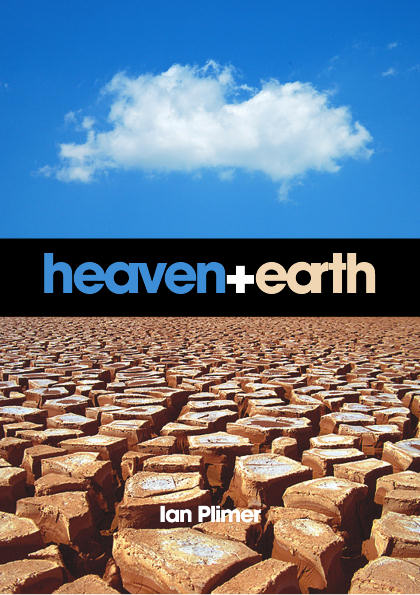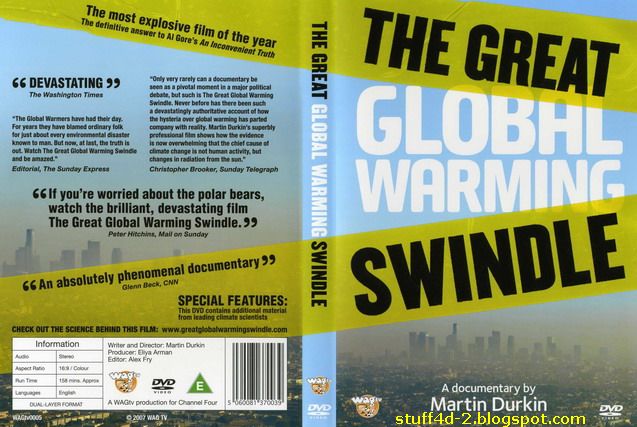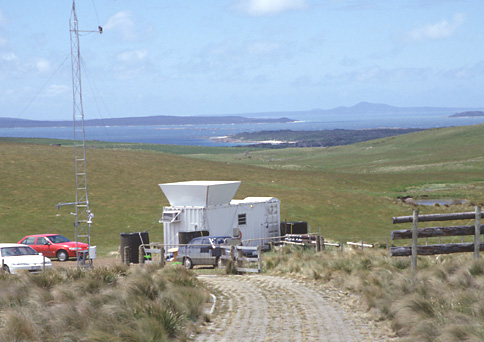|
Radschool Association Magazine - Vol 31 Page 16 |
|
Privacy Policy | Editorial Policy | Join the Association | List of Members | Contact us | Index | Links | Print this page |
|
|
|
Climate change – the other argument.
In order that we remain impartial and provide both sides of the argument, we have been asked to print the following article from Barry Jones which appears on the ABC page, “The Drum, Unleashed”, though in all honesty, we must say a issue that was once considered a threat to the very existence of all humanity is now a bit of a ho hum..
**********
The curious piece Kill the IPCC (The Drum - Unleashed, 8 December 2009) by Professor Bob Carter of the James Cook University illustrates how easy it is for climate sceptics to obtain media coverage, and those with a science background have no need to go through the tedious process of researching, writing and submitting papers for peer-review.
Publications by climate change denialists/sceptics mostly fall into two categories, knockabout polemic (mostly ad hominem) and objectors to a particular point of detail. The publications are rarely published in refereed journals, which suggests sharply alternative explanations - one, that the material is not credible, testable or evidence-based, or, two, that there is a conspiracy by a scientific Mafia to suppress dissent. (Denialists are strongly drawn to the second alternative).
Prof. Carter's central theme can be summarised as 'Scientists are corrupt but lobbyists are pure'.
He wrote: I grimace at the thought [of the Copenhagen Summit] because the study of climate change, under the aegis of "dangerous global warming caused by human carbon dioxide emissions," has long since been captured by the small group of well connected, well networked and well funded atmospheric scientists and computer modellers who advise the Intergovernmental Panel on Climate Change (IPCC), and whose nearly every utterance confirms their ignorance of the true course of climate history and change on our planet - a topic that is the domain of geologists, not meteorologists and computer jockeys.
Naturally, I would turn to geologists for advice on brain surgery, dentistry, accounting or religion, but in the field of climate science I lean towards meteorologists. Geologists such as Prof. Ian Plimer are used to working in eras which last for millions of years - and the period of human civilisation since the great Ice Age may well seem inconsequential, and the life expectancy of people now living a mere blip.
Scientists are not immune from vanity, and some have been encouraged by being told: 'The most important scientific factor in the climate change debate happens to be your area of expertise. Everyone else has it wrong. You are the only one who has it right'.
A mantra vigorously pursued by Prof. Carter and propagated by Andrew Bolt (right) in the Herald-Sun and on the ABC's The Insiders is that the hottest year in modern meteorological records was 1998 and that the decade since has been a period of cooling. Hence, it is asserted - the 'global warming' hypothesis is discredited, and with it the concept of 'anthropogenic climate change'.
It is true that the Hadley Climate Centre in the UK isolated the calendar year 1998 as the hottest on record for aggregate atmospheric temperature. On the other hand, the Goddard Institute of Space Studies (GISS) at NASA asserts that 2005 was even warmer, with an average global surface temperature of 14.77 degrees C, with the 1998 figure being 14.71 degrees C. A tropical El Niño contributed 0.2 degrees in 1998, but 2005 had no Niño effect.
However, the fourteen year period 1995-2008 included thirteen of the hottest years on record, the exception being 1996. The fundamental question is, 'Which factor is more significant? A spike on a chart representing a single year, or a longer trend line over a decade or more?'
The chart below is from the Hadley Centre.
|
|
|
|
|
|
A suicide bomber
runs into a pet shop and yells, 'you've all got 30 seconds to get
out!' |
|
|
|
There have been anomalous single years before. It seems that 1934 was the hottest year in the history of the continental United States, but not globally. However, even in the United States the temperature variation that put 1934 in first position (0.1 degree C) is within the margin of error. Historically, 1877 and 1878 were unusually warm years.
Both the Hadley Centre and GISS calculate 2008 to have been cooler than 2007, by margins of 0.072 and 0.13 of a degree C respectively - but the impact of a strong cooling La Niña cycle has to be taken into account.
Globally, 2007 tied with 1998 - but 2007 was a year of low El Niño activity and solar activity was in a low part of the cycle. This means that the 2007 result is far more likely to be anthropogenic.
On global warming/climate change there has been an unprecedented convergence of observation and theorising in a variety of disciplines, including zoology, botany, physics, chemistry, oceanography, glaciology, polar science, geology, epidemiology, population health, ecology.
Oddly, dissidents rarely refer to observed phenomena (disappearance of Arctic ice, thinning of Greenland's glaciers, fractures at the edge of the West Antarctic ice shelf, thawing of Siberian tundra, changes in bird migration, early flowering of plants) - and there is generally no analysis of risk either. (Professor Carter (left) is no exception. His attack on the IPCC never mentions observed phenomena.)
The principle of Occam's Razor suggests that it is reasonable to begin by assuming a common (or highly related) cause. The dichotomy is between observed phenomena and ideological conviction (or vested interest).
There has been an odd refusal by climate change deniers/ sceptics to examine risk - or even use the word. An 80 per cent chance that a particular horse will win a race or that a company's share value will increase would be regarded with great optimism - but an airline which advertised: 'You have an 80 per cent chance of surviving this flight' would be smartly out of business.
Dick Cheney, George W. Bush's Vice President, argued that where national security was involved (especially with terrorism) even a 1 per cent risk had to be acted on. This approach was not adopted with respect to climate change and the IPCC's warnings of a 90 per cent probability of human intervention in climate change (which had strong national security implications) drew no response.
Are the climate sceptics so confident of their position that they think there is 0 per cent chance of anthropogenic climate change?
It is puzzling - but has hardly been remarked on - that the Montreal Protocol (1989) for the reduction or phasing out of hydrochlorofluorocarbons (HCFCs), used as refrigerants and aerosol propellants, to combat the growing depletion of the ozone layer, especially the gaping hole over and near Antarctica, in the Antarctic region, was accepted internationally, speedily, without demur, because there was no lobbying campaign to challenge the 'ozone hole' science.
Vested
interests - the chemical giants - were happy to take up the
challenge of finding new solutions and creating new products. To
state the blindingly obvious, the sheer volume of HCFCs released
into the atmosphere was tiny - an infinitesimal percentage of the
generation of greenhouse gases, notably CO² and methane, and yet
there was consensus that the HCFCs were damaging the upper
atmosphere, a telling illustration of how human activity can change
the global environment.
There has been much significant, and discreditable, cherry picking of evidence - using the Hadley Centre (right) material selectively is a striking example. Sceptics gratefully use Hadley's '1998 the hottest year' argument but refuse to qualify it by adding Hadley's explanation that it is an anomaly.
'The jury is still out…Climate change is an open issue'. Contrarians achieved a major success with the US media in the climate change debate (as they did with creationism v. evolution) in ensuring, in the interest of 'fairness', or 'balance', that for every spokesman who argued the climate change position, a denier had to be given equal time. This created the illusion that a 90/10 (or even 95/5) division of expert opinion was more like a 50/50 division, and that the question was still an open one.
Other issues on which there is disagreement among scientists - or historians (but more in the 90/10 range than 50/50) include:
• HIV-AIDS (whether it is transmitted by virus) • The Holocaust • Aboriginal dispossession • Smoking and lung cancer • Fluoridation • Evolution • The Age of the Earth.
Does the denial of the Holocaust by David Irving, an accomplished, if eccentric, historian, mean that it is 'an open question…the jury is still out'?
There is overwhelming scientific consensus on many issues involved in climate change/ global warming but there are some areas of denial or scepticism on specific points of detail. A distinction can be made between sceptics who are open to persuasion, contrarians who object on some points of detail, and denialists, who act on ideological conviction, and may not be open to proof.
The attack on 'consensus' was a standard technique used by the tobacco industry to challenge linkages between smoking and lung cancer, always pointing to anomalies (e.g. the non-smoking nun who dies of lung cancer) and ignoring mainstream evidence.
This is a wilful and gross mis-reading the history and philosophy of science, and distortion of scientific method. (Galileo's name is often invoked as evidence that the consensus position is generally wrong.) This approach is not scepticism but cynicism: its aim is not to ascertain truth but to promote confusion. The argument seems to be that if there is 0 per cent support for a proposition it should be rejected for lack of evidence, but if there is 100 per cent support, it should be rejected because consensus is dangerous.
In reality, the IPCC has taken an extremely conservative position, seeking consensus at all costs.
There is confusion between 'convergence' and 'consensus'. Often the 'consensus' rule is used to block action, for example in the 'Climate Change' stream at the Australia 2020 Summit, because it is taken to require unanimity, and a small determined minority can block the views of a large majority.
'Climate-gate', the selective use of stolen e-mails from the University of East Anglia, some of which indicate an all too human (and all too common) frustration with the experimental process, received global attention as a desperate attempt to undermine the fundamental findings of climate science. It was an extreme example of 'cherry picking'. The Guardian reported that 'the e-mails had first been uploaded to a sceptic website from a computer in Russia'. The main lesson to be learnt is that e-mail users ought to be careful in what they write: a hacker may be poised to steal and publish them. Today, Google has 31,200,000 citations for 'Climate-gate', most of them from partisans furious that the 'revelations' have not been taken seriously.
A repeated argument by climate change sceptics is that protagonists of anthropogenic climate change are essentially religious zealots for a 'green religion' while common sense is reflected in the thinking of courageous dissidents who argue against the mainstream. It is an inversion of reality.
One of the false assertions is that scientists who take the mainstream position are rewarded, while dissenters are punished (similar to Galileo and the Inquisition). In the past decade in the United States and Australia the contrary was true.
The proposition from Fourier, Tyndall and Arrhenius onwards that human activity can affect climate is the Galileo/ Harvey/ Newton/ Darwin/ Pasteur/ Einstein insight. The denialist position is closer to the Inquisition, asserting 'it just can't be so' and that proponents are part of a 'lazy [or over-zealous?] consensus'.
|
|
|
|
|
|
Heaven and Earth by Ian Plimer Michael Ashley The Australian May 09, 2009
ONE of the peculiar things about being an astronomer is that you receive, from time to time, monographs on topics such as "a new theory of the electric universe", or "Einstein was wrong", or "the moon landings were a hoax".
The writings are always earnest, often involve conspiracy theories and are scientifically worthless.
This is a remarkable claim. If Plimer is right and he is able to show that the work of literally thousands of oceanographers, solar physicists, biologists, atmospheric scientists, geologists, and snow and ice researchers during the past 100 years is fundamentally flawed, then it would rank as one of the greatest discoveries of the century and would almost certainly earn him a Nobel prize. This is the scale of Plimer's claim.
Before
reading any further, I examined Plimer's publication list on the
University of Adelaide website to see what he has published in
refereed journals. There are a scant 17 such papers since 1994, two
as first author with the titles "Manganoan garnet rocks associated
with the Broken Hill Pb-Zn-Ag orebody" and "Kasolite from the
British Empire Mine".
Absolutely nothing on climate science.
(To be fair, there is also a book called “A Short History of Planet Earth” – tb)
Now, before I am accused of attacking the man and not the argument, let me point out that scientists regard peer-reviewed journal publications as fundamental for advancing science. They allow ideas to be exchanged, tested, improved on and, quite frequently, discarded. If Plimer can do what he claims, and can prove that human emissions of CO2 have no effect on the climate, then he owes it to the scientific community and, in fact, humanity, to publish his arguments in a refereed journal.
Perhaps we will find a stitch-by-stitch demolition of climate science in his book, as promised? No such luck. The arguments that Plimer advances in the 503 pages and 2311 footnotes in Heaven and Earth are nonsense. The book is largely a collection of contrarian ideas and conspiracy theories that are rife in the blogosphere. The writing is rambling and repetitive; the arguments flawed and illogical.
He recycles
a graph, without attribution, from Martin Durkin's
Great Global Warming Swindle documentary, neglecting even to
make the changes that Durkin made following an outcry over the fact
that the past two
To appreciate the errors in Plimer's book you don't have to be a climate scientist. For example, take the measurement of the global average CO2 concentration in the atmosphere. This is obviously important, so scientists measure it with great care at many locations across the world.
Precision measurements have been made daily since 1958 at Mauna Loa Observatory in Hawaii, a mountain-top site with a clear airflow unaffected by local pollution. The data is in excellent agreement with ice cores from several sites in Antarctica and Greenland. Thousands of scientific papers have been written on the topic, hundreds of scientists are involved from many independent research groups.
Plimer, however, writes that a simple home experiment indoors can show that in a week, CO2 can vary by 75 parts per million by volume, equal to about 40 years' worth of change at the present rate. He thinks this "rings alarm bells" on the veracity of the Mauna Loa data, which shows a smoothly rising concentration.
While it is undoubtedly true that if you measure CO2 in your home it could vary by large amounts from day to day -- depending, for example, on whether you have the windows open or closed, or how many people are in the house at the time -- this is not the right way to measure a global average. That's why scientists go to mountain-tops or Antarctica or to the isolated Cape Grimm (right) on the Tasmanian coast rather than measuring CO2 in their living rooms.
Incredible as it may seem, this quality of argument is typical of the book. While the text is annotated profusely with footnotes and refers to papers in the top journals, thus giving it the veneer of scholarship, it is often the case that the cited articles do not support the text. Plimer repeatedly veers off to the climate sceptic's journal of choice, the bottom-tier Energy and Environment, to advance all manner of absurd theories: for example, that CO2 concentrations actually have fallen since 1942.
Plimer believes "global warming" occurring on Mars, Triton, Jupiter and Pluto proves human emissions of CO2 don't affect Earth's climate. He believes that once CO2 levels reached 200ppmv (about half of today's value) the CO2 had absorbed almost all the infrared energy it could, and further increases will not have much effect. He believes global warming does not lead to biological stress. He believes volcanoes emit significant quantities of chlorofluorocarbons. He believes the sun formed on the collapsed core of a supernova. All these ideas are so wrong as to be laughable: they do not offer an "alternative scientific perspective".
Plimer probably didn't expect an astronomer to review his book. I couldn't help noticing on page120 an almost word-for-word reproduction of the abstract from a well-known loony paper entitled "The Sun is a plasma diffuser that sorts atoms by mass". This paper argues that the sun isn't composed of 98 per cent hydrogen and helium, as astronomers have confirmed through a century of observation and theory, but is instead similar in composition to a meteorite.
It is hard to understate the depth of scientific ignorance that the inclusion of this information demonstrates. It is comparable to a biologist claiming that plants obtain energy from magnetism rather than photosynthesis.
Plimer has done an enormous disservice to science, and the dedicated scientists who are trying to understand climate and the influence of humans, by publishing this book. It is not "merely" atmospheric scientists that would have to be wrong for Plimer to be right. It would require a rewriting of biology, geology, physics, oceanography, astronomy and statistics. Plimer's book deserves to languish on the shelves along with similar pseudo-science such as the writings of Immanuel Velikovsky and Erich von Daniken.
Michael Ashley is professor of astrophysics at the University of NSW.
|
|
Perhaps the answer! |
|
|
|
If you want to watch the above mentioned documentary, “The Great Climate Change Swindle" you can do so HERE - it's worth a look, then make up your own minds.
|
|
|
|
|
|
|
Back Go to page: 1 2 3 4 5 6 7 8 9 10 11 12 13 14 15 16 17 18 19 20 Forward
|










 decades
of temperature measurements had been mysteriously deleted. Plimer
claims that scientists such as himself, who do not agree with the
consensus, are labelled deniers, "yet their scientific doubts are
not addressed". Nothing could be further from the truth. All of
Plimer's arguments have been addressed ad nauseam by patient climate
scientists on websites or in the literature.
decades
of temperature measurements had been mysteriously deleted. Plimer
claims that scientists such as himself, who do not agree with the
consensus, are labelled deniers, "yet their scientific doubts are
not addressed". Nothing could be further from the truth. All of
Plimer's arguments have been addressed ad nauseam by patient climate
scientists on websites or in the literature.

